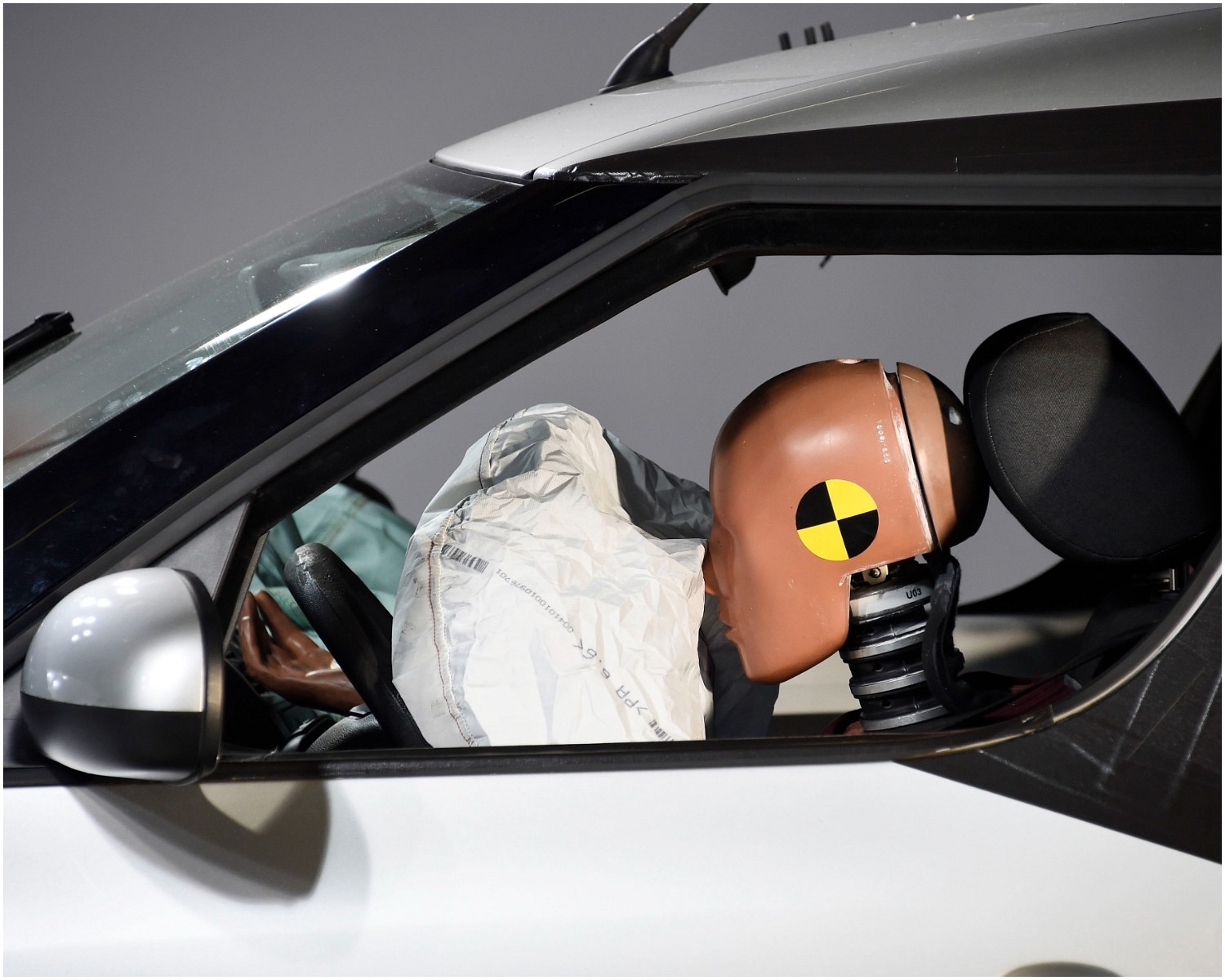Analysis
Could Mandatory Airbags Make Automotive Stocks Unsafe?
- Union Minister of Transport, Nitin Gadkari, has proposed that all new models produced after October 1 should have all six airbags in place. While the proposal has not been approved yet, stakeholders are divided on the issue.
- Original equipment manufacturers (OEMs) such as Maruti that manufacture smaller mass-market cars could feel the pinch if such rules are enforced.
- The addition of airbags could add up to Rs 50,000 to the cost of a car, resulting in a large increase in the prices of smaller cars.

Airbag Testing
According to RC Bhargava, the Chairman of Maruti Suzuki India Limited, India’s auto industry could see a slowdown if airbags are made mandatory in cars. Airbags have come a long way from being offered an accessory for an extra price to becoming mandatory in the front and driver seats.
Union Minister of Transport, Nitin Gadkari, has proposed that all new models produced after October 1 should have all six airbags in place. While the proposal has not been approved yet, stakeholders are divided on the issue.
Original equipment manufacturers (OEMs) such as Maruti that manufacture smaller mass-market cars could feel the pinch if such rules are enforced. Indian cars at the lower end are usually barebones vehicles that come with the most basic features in order to make them affordable for India’s large aspiring middle class. However, the trade-off results in cars that lack several critical safety and security features.
The addition of airbags could add up to Rs 50,000 to the cost of a car, resulting in a large increase in the prices of smaller cars. For instance, Alto’s base model costs around Rs 3.25 lakhs, and the addition of mandatory airbags costing Rs 30,000-50,000 would increase the price by at least 10-15 per cent.
An alteration in the number of airbags would require an alteration in the vehicles’ design, especially if curtain airbags are made mandatory. Hence, some OEMs that cater to the mass market of lower-end cars feel that the market might be unable to absorb such a large price increase and ultimately result in a drop in demand. These entry segment cars usually attract first-time buyers who are looking for cheaper options to upgrade to a four-wheeler.
Usually, OEMs are slow to upgrade features in lower variant cars in order to prevent a contraction in demand. Even critical units such as immobilisers or anti-braking systems were not assembled in the cars previously but were offered as accessories after or during the purchase. However, over the last few years, these features have begun appearing as default, even in base models.
From the government’s perspective, making airbags mandatory would help prevent deaths and serious injuries for passengers. Minister Nitin Gadkari said that 13022 lives could have been saved in 2020 if vehicles had been equipped with airbags. According to a report by the World Bank in 2021, India only had 1 per cent of the world’s vehicles but accounted for 11 per cent of deaths globally. While the fatality rate is three times lower than the road accident deaths in a low-income country, road accidents remain a cause of concern for the Indian government. However, this isn’t the first time the government is looking to make airbags mandatory.
Previously, in 2017, the government had targeted that by July 1, 2019, all four-wheeler vehicles would be equipped with airbags, seat belts, reverse parking sensors, and a central locking system with a manual override. Nevertheless, the rule did not become a reality, and cars continue to be sold with bare minimum safety features. Top variants from most companies, however, come with multiple safety features. Even the export models are usually equipped with these features as customers are ready to pay up for these features, and other governments have made many of these features mandatory.
The focus on safety features mandatory has been a relatively new objective for the Indian government, with the driver airbag becoming mandatory only in April 2019, while the passenger airbag becomes mandatory on 1 January 2022.
The auto sector is already undergoing a rough patch, even as OEMs grapple with the technological disruption in space with the advent of electric vehicles. A raw material shortage has resulted in elevated input costs for these players and the addition of airbags would only add to the cost. The increase in costs comes at a time when demand is low, and the price increases cannot be passed on to customers easily.
Auto parts companies involved in safety components manufacturing stand to become beneficiaries in case safety features are made mandatory. But, the possibly lower sales of four-wheelers after a price increase would dampen the aggregate demand for auto parts. Hence, the announcement might not offer immediate rewards for such companies. Nevertheless, the entire situation remains contingent on the government going ahead with its plan to improve passenger safety on Indian roads.
Support Swarajya's 50 Ground Reports Project & Sponsor A Story
Every general election Swarajya does a 50 ground reports project.
Aimed only at serious readers and those who appreciate the nuances of political undercurrents, the project provides a sense of India's electoral landscape. As you know, these reports are produced after considerable investment of travel, time and effort on the ground.
This time too we've kicked off the project in style and have covered over 30 constituencies already. If you're someone who appreciates such work and have enjoyed our coverage please consider sponsoring a ground report for just Rs 2999 to Rs 19,999 - it goes a long way in helping us produce more quality reportage.
You can also back this project by becoming a subscriber for as little as Rs 999 - so do click on this links and choose a plan that suits you and back us.
Click below to contribute.
Latest